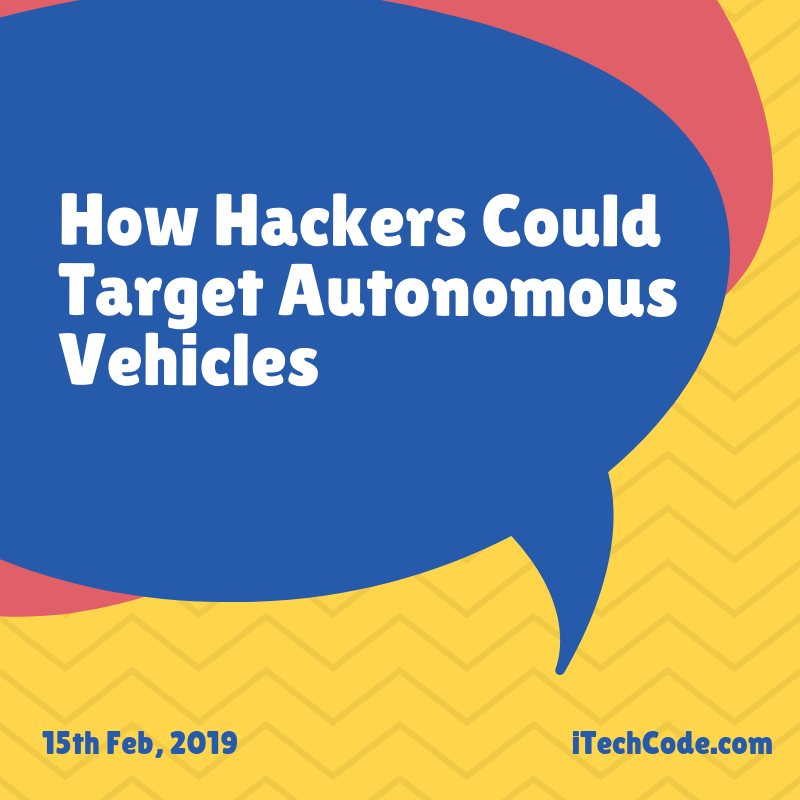Dozens of private companies are working to bring autonomous vehicles to market, and they’ve racked up hundreds of thousands of miles between them. While there are plenty of reasons to get excited about self-driving cars and other vehicles, however, the threat of hacking attacks on autonomous vehicles is enough to give us plenty of pause for thought.

If you thought that having someone key your car was the worst malicious act someone could do to a vehicle, you’d better think again.
A range of possible attacks
In the same way that there are plenty of attacks which can be made against desktop computers, there are those that can be made against autonomous cars — which are, essentially, high-speed computers on wheels. Distributed denial of service (DDoS) attacks, for instance, has been on the rise in recent years as hackers attempt to take companies offline or steal sensitive data. These attacks, which overwhelm computer networks by sending too many connection requests, could also be used to knock out the communications systems that allow autonomous vehicles to communicate with satellites, other vehicles, or the internet. As a result, a DDoS attack could severely impair a self-driving car’s ability to function correctly.
Other possible attacks could focus on jamming the sensors that allow self-driving cars to perceive the world around them. Typical self-driving cars use a plethora of different smart sensing technologies, ranging from pulsed laser light LiDAR to GPS and depth-sensing cameras. Attacking these sensors to make them either inoperable or less efficient could have potentially devastating, catastrophic implications when it comes to being able to respond to environmental or other obstacles on the road. A hacker might also be able to have an effect on the car’s engine, transmission, fuel, and safety systems, and more were they to have the expertise to gain access to an autonomous vehicle’s inner workings.
Remotely hacking vehicles
Imagining that a hacker could take control of a car while it’s being driven sounds like something out of a particularly scary Hollywood movie. In fact, it’s something which has already been demonstrated in real life. In 2015, car manufacturer Chrysler announced a recall for a massive 1.4 million vehicles after hackers (fortunately working on the side of good) demonstrated that they could remotely hack a Jeep’s digital systems online. This included seizing control of a vehicle while it was driving on the highway, disabling its brakes, and more.
Not all hacks will involve the car’s navigation systems, of course. As terrifying as the idea of being held to ransom by a hacker threatening to disable your brakes unless you pay them money certainly is, there are plenty of other possible data breaches which could take place. In the same way that our computers are repositories for personal data — ranging from passwords for email and subscription services to banking details — so too will our autonomous cars be. Many people spend hours each day commuting to and from work. In addition to various entertainment profiles, tied to our credit card accounts, autonomous cars will have information about our travel and destination. This data is ripe for possible abuse by hackers.
Attacks up close or at a distance
As with computers, these attacks could take place in a variety of different ways. The most harmful attacks would be those which could take place remotely from long range since these would prove to be the most scalable. Alternative attacks could take place remotely, but at much shorter ranges, or physical access attacks involving dongles or targeting the vehicle’s Ethernet network.
A few things make these threats scarier than the already nerve-racking prospect of other types of a hack. Others are the potential stakes. Hacking a data center could cost victims reputation, time, and money. Hacking an autonomous vehicle could cost lives.
The other concerning aspect of this is how prepared carmakers might be. Tech companies are already used to fending off cyber attacks, but this is a much newer field for traditional car manufacturers moving into autonomous driving technologies. As with any new, relatively unproven technology, there are bound to be vulnerabilities on the road to maturity — and these could come with a heavy price. While security researchers have suggested that self-driving vehicles are actually much less hackable than some fear, a race between companies to get the first autonomous vehicles out onto the streets and into the hands of customers could mean potential shortcuts when it comes to security.
The rise of mitigation services?
Just like alternative forms of computers, securing autonomous vehicles will require expertise. As these vehicles become mainstream, it is likely that we will see the rise of third-party mitigation services focuses on protecting self-driving cars and other vehicles. They will be able to help improve the kinds of firewalls, code and data signing, and other precautionary measures that will keep autonomous cars safe.
Don’t get us wrong: Chances are that passengers will be considerably safer in an autonomous car than they are in one driven by a human. We’ve got no reason to doubt this — and self-driving vehicle companies are taking the subject of security very seriously. But, as with other attacks, hackers have plenty to gain from possible attacks. As ever, it’s important to know what these might include.
You can also stay updated by subscribing to iTechCode.